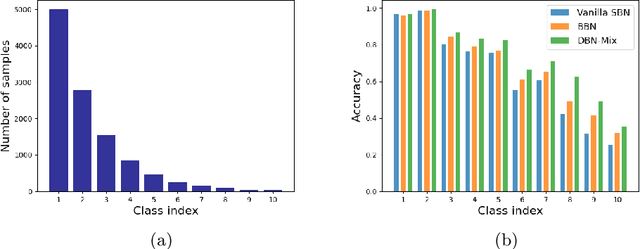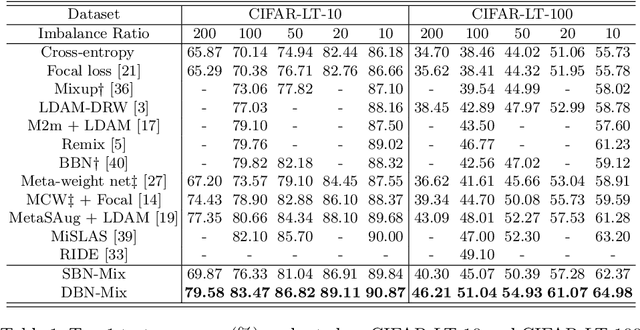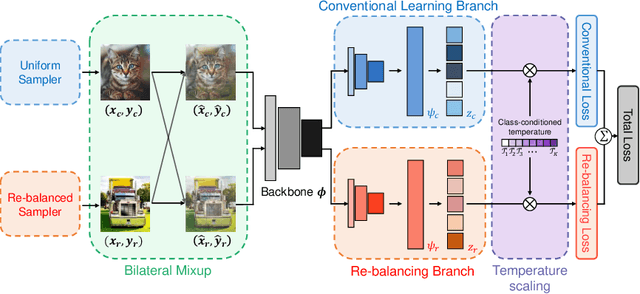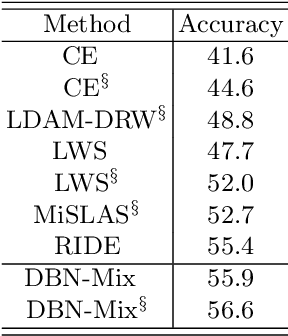DBN-Mix: Training Dual Branch Network Using Bilateral Mixup Augmentation for Long-Tailed Visual Recognition
Paper and Code
Jul 05, 2022



There is a growing interest in the challenging visual perception task of learning from long-tailed class distributions. The extreme class imbalance in the training dataset biases the model to prefer to recognize majority-class data over minority-class data. Recently, the dual branch network (DBN) framework has been proposed, where two branch networks; the conventional branch and the re-balancing branch were employed to improve the accuracy of long-tailed visual recognition. The re-balancing branch uses a reverse sampler to generate class-balanced training samples to mitigate bias due to class imbalance. Although this strategy has been quite successful in handling bias, using a reversed sampler for training can degrade the representation learning performance. To alleviate this issue, the conventional method used a carefully designed cumulative learning strategy, in which the influence of the re-balancing branch gradually increases throughout the entire training phase. In this study, we aim to develop a simple yet effective method to improve the performance of DBN without cumulative learning that is difficult to optimize. We devise a simple data augmentation method termed bilateral mixup augmentation, which combines one sample from the uniform sampler with another sample from the reversed sampler to produce a training sample. Furthermore, we present class-conditional temperature scaling that mitigates bias toward the majority class for the proposed DBN architecture. Our experiments performed on widely used long-tailed visual recognition datasets show that bilateral mixup augmentation is quite effective in improving the representation learning performance of DBNs, and that the proposed method achieves state-of-the-art performance for some categories.
 Add to Chrome
Add to Chrome Add to Firefox
Add to Firefox Add to Edge
Add to Edge